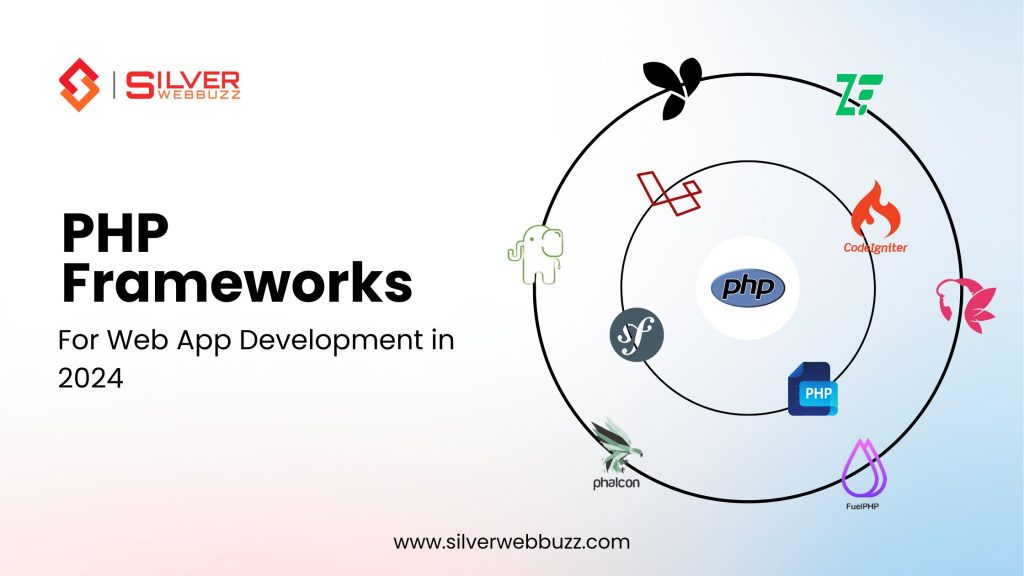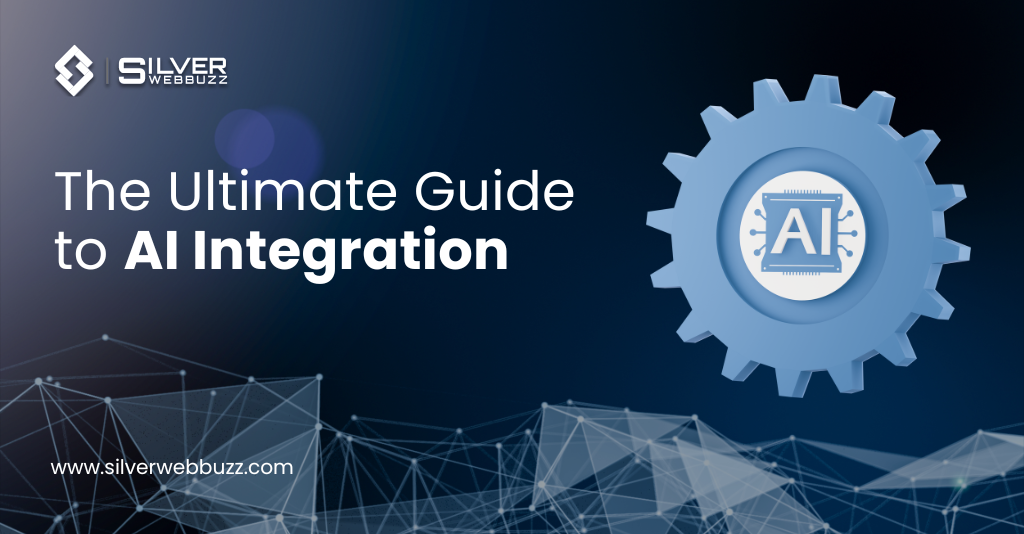The web development landscape in 2025 looks nothing like it did a few years ago. What began as simple code automation has now evolved into a full ecosystem of AI-powered web development tools that handle everything—from writing front-end components to testing and deployment.
Artificial intelligence has shifted from being a “bonus feature” to a standard layer of modern web workflows. Whether it’s coding, design, or optimization, AI-driven platforms are enabling developers to build smarter, faster, and more user-focused websites.
The demand for data-driven, scalable, and real-time web experiences is driving this change. Businesses now expect sites that can personalize layouts, generate content dynamically, and adapt to user behavior — all powered by machine learning.
In fact, according to recent tech industry data, over 60% of new websites in 2025 use AI-assisted design or code generation tools. This signals a major transformation — one where web developers are no longer just writing code, but collaborating with AI systems to deliver intelligent digital experiences.
The Evolution: From Manual Coding to AI-Assisted Development
The last five years have completely changed how websites are built. Manual coding, once the backbone of web development, is now being replaced with AI-assisted development environments that understand context, predict intent, and even write production-ready code.
Early automation tools were limited to syntax suggestions or reusable snippets. But today’s AI web development tools (2025) go much further — they analyze millions of code repositories to suggest optimal patterns, reduce errors, and accelerate workflows.
Modern IDEs like GitHub Copilot, Codeium, and Replit Ghostwriter are prime examples. They don’t just autocomplete lines; they interpret natural-language prompts and generate complete functions, React components, or API calls within seconds.
This shift is not just about speed — it’s about intelligence in development. AI systems are now able to detect inefficient code, offer real-time debugging tips, and ensure consistent standards across large projects.
Core Areas Where AI Is Automating Web Development
AI is now deeply integrated into every layer of web development — from writing code to testing and performance optimization. Below are the key areas where automation is transforming the workflow for developers and businesses in 2025.
AI-Powered Coding and Debugging
Coding has evolved into a human–AI collaboration. Tools like GitHub Copilot, TabNine, and Codeium analyze entire codebases to predict what a developer will write next. They automatically generate functions, suggest better logic, and detect potential syntax or performance issues.
Example: A front-end developer working on a React project can now describe a layout in plain English — “create a responsive pricing grid with three columns” — and AI generates the JSX code instantly.
This has dramatically reduced repetitive coding time while improving code consistency and accuracy. Many teams report fewer merge conflicts and faster reviews because the AI ensures uniform coding patterns across the project.
Key benefits:
- Up to 50% faster development cycles
- Fewer syntax and logic errors
- Better collaboration across distributed teams
AI-Driven UI/UX Design
Design is no longer limited to manual prototyping. Platforms like Uizard, Galileo AI, and Figma’s AI features now generate wireframes, color palettes, and complete design systems based on text prompts or user data.
AI-powered design tools also personalize layouts by analyzing user behavior and engagement metrics — creating experiences that adapt automatically to audience preferences.
Example: A SaaS company uses AI to generate multiple landing page variations and runs automated A/B tests. The system identifies the best-performing design version without any manual input, improving conversions significantly.
AI design integration also bridges the gap between design and code. Developers can instantly turn AI-generated mockups into responsive HTML or React components — speeding up the handoff process between designers and coders.
Automated Testing and QA
Testing is one of the biggest beneficiaries of AI automation. Intelligent QA tools like Testim, Mabl, and LambdaTest AI now analyze UI changes, detect broken flows, and automatically generate test cases.
AI-driven testing platforms understand app behavior through user interaction data. They can identify regressions, accessibility gaps, and performance bottlenecks far faster than manual testers.
AI in Performance Optimization
Website speed and performance directly impact SEO and user retention. AI now plays a major role in analyzing and optimizing Core Web Vitals like LCP, CLS, and FID.
Tools such as Cloudflare’s AI Insights and NitroPack use predictive caching, lazy loading, and intelligent image compression to improve site speed automatically.
Example: A retail brand implemented AI-based optimization and reduced its average load time from 4 seconds to just 1.5 seconds, significantly improving mobile conversions.
AI also predicts traffic spikes and allocates server resources dynamically — ensuring stable performance during high-demand periods.
Content Generation and SEO Automation
AI-powered content systems like ChatGPT, Jasper, and SurferSEO now automate large parts of web copywriting, metadata creation, and keyword optimization.
These tools help developers and marketers generate SEO-friendly content faster while maintaining structure and readability.
However, while automation speeds up content creation, human review remains essential. Editors must ensure that brand voice, factual accuracy, and E-E-A-T (Experience, Expertise, Authoritativeness, Trustworthiness) remain intact.
Real-World Use Cases: How Companies Are Using AI in Web Development
The practical applications of AI in web development are now visible across every business sector. From eCommerce brands to SaaS startups and large enterprises, organizations are using AI not only to automate workflows but also to create smarter, data-driven digital experiences.
1. E-Commerce: AI-Driven Product Pages and Dynamic Personalization
E-commerce companies have adopted AI website builders and AI-driven UX/UI design tools to personalize online shopping at scale. AI automatically generates product descriptions, image layouts, and SEO metadata for each SKU — ensuring consistency and faster go-live cycles.
Some brands use machine learning for web developers to recommend products based on browsing behavior or cart history. This personalization improves click-through rates and conversion metrics without increasing manual design time.
2. SaaS Platforms: AI Chatbots and Automated Onboarding
For SaaS businesses, AI integration in CMS platforms and onboarding systems is a game-changer. AI chatbots trained on support documentation now answer user queries instantly, guiding them through account setup, billing, or product tutorials.
This automation not only reduces support costs but also enhances customer satisfaction. Many SaaS teams also use AI coding assistants to speed up feature rollouts — making their platforms more adaptive and responsive.
Example: A SaaS startup built a custom chatbot using a large-language model integrated with its internal knowledge base. The chatbot now resolves over 70% of customer queries automatically, freeing human agents for complex issues.
3. Digital Agencies: AI Workflow Automation for Client Websites
Web development agencies are leveraging AI web development tools 2025 to accelerate project delivery and reduce revisions. Automated content creation, AI-based design prototyping, and testing pipelines have redefined how agencies build and manage client sites.
Example: An AI web development company in Europe implemented AI templates and Figma-to-code automation. The firm cut its average project time by half — from 8 weeks to 4 — while maintaining design precision and cross-platform quality.
For agencies managing multiple projects, these AI workflows ensure faster execution, higher consistency, and better scalability.
4. Enterprises: Data-Driven Dashboards and Predictive Analytics
Large organizations use AI to build custom dashboards that interpret business data through machine learning models. These dashboards highlight sales patterns, customer segments, and engagement metrics automatically — giving decision-makers real-time insight.
Enterprises are also integrating AI in front-end development to create adaptive interfaces that change based on employee or user role.
Example: A financial enterprise used AI models to analyze dashboard interactions and automatically adjust UI elements for better clarity and performance. This led to a measurable improvement in user productivity and system usability.
5. Content-Heavy Businesses: SEO and Multilingual Automation
Media and content platforms now rely on AI SEO tools and content generation systems to produce articles, blogs, and landing pages faster. With AI handling multilingual translation and keyword clustering, teams can reach global audiences efficiently.
Example: An Artificial intelligence development company partnered with a publishing firm to implement automated content workflows. AI handled initial drafts and translations, while editors focused on storytelling and tone — resulting increase in publishing volume without loss of quality.
Key Tools & Platforms Defining AI Web Development in 2025
The rise of AI in web development has brought an entire ecosystem of tools designed to automate every stage of the web creation process. From coding assistants to AI-driven CMS platforms, these solutions are shaping how developers, designers, and businesses build digital experiences in 2025.
| Category | Leading Tools & Platforms | Real-World Use Case |
|---|---|---|
| AI Coding Assistants | GitHub Copilot, Codeium, Replit Ghostwriter | Auto-generating reusable code snippets and front-end components using natural language prompts. |
| AI Design & Prototyping | Figma AI, Uizard, Galileo AI | Rapid wireframing, layout creation, and generating responsive design mockups directly from text prompts. |
| AI CMS & Website Builders | Framer AI, Wix ADI, 10Web | Complete website generation from content briefs; ideal for startups and agencies seeking faster deployment. |
| AI Testing & Optimization | Mabl, Testim, BrowserStack AI, LambdaTest | Automated UI, regression, and performance testing for agile CI/CD pipelines. |
| AI SEO & Content Automation | SurferSEO, Jasper, Writesonic | On-page SEO recommendations, AI-assisted keyword optimization, and automated content drafting. |
| AI Performance Tools | Cloudflare AI, NitroPack, SpeedCurve AI | Automated image optimization, caching, and load-time improvement through predictive algorithms. |
| AI Analytics & Personalization | Segment AI, Adobe Sensei, Google Cloud Vertex | Real-time data insights and predictive personalization for better UX and higher conversion rates. |
The Benefits: Why Developers and Businesses Are Adopting AI Automation
The adoption of AI in web development is no longer about staying ahead — it’s about staying relevant. Organizations that embrace automation are experiencing measurable gains in productivity, quality, and user satisfaction.
1. Faster Time-to-Market
AI automates repetitive tasks like coding boilerplate, testing, and performance optimization — allowing teams to deliver websites and applications significantly faster.
A development agency using AI testing and deployment pipelines reported a 50% reduction in project turnaround time, enabling quicker client delivery and more agile updates.
2. Lower Development and Maintenance Costs
AI tools reduce the need for large manual QA teams, design iterations, and redundant coding cycles. Automated testing and AI-based optimization minimize post-launch issues, lowering overall maintenance expenses.
3. Improved Code Accuracy and Security
AI coding assistants help identify syntax errors, logic gaps, and security vulnerabilities in real time. These systems continuously learn from millions of open-source projects, helping developers maintain cleaner, safer, and more consistent codebases.
This proactive detection reduces potential security risks before deployment and strengthens site reliability.
4. Smarter User Experience and Higher Conversions
AI-driven UX/UI design and machine learning for web developers enable dynamic, user-centered websites that respond intelligently to user behavior.
By personalizing layouts, recommendations, and content, companies have seen direct improvements in engagement and conversions.
Example: After adopting AI-led UX enhancements, one enterprise reported a 25% boost in conversion rates and a significant drop in bounce rate.
5. Scalable and Data-Driven Development
AI-driven CMS platforms and analytics integrations give teams deep insights into site performance, allowing data-backed design and content decisions.
These insights ensure that every development cycle contributes to measurable business growth — whether through faster performance, SEO gains, or better audience targeting.
Challenges and Limitations of AI in Web Development
While AI automation is reshaping the future of web development, it isn’t without challenges. The increasing reliance on AI tools has introduced new risks around creativity, data privacy, and code transparency that developers and businesses must manage carefully.
1. Over-Reliance on Automation
AI tools can generate functional code and designs, but they lack true creative judgment. Over-dependence on them can lead to generic layouts, repetitive design patterns, or performance trade-offs if developers don’t review outputs critically.
Web teams need to maintain a human-in-the-loop approach — where AI accelerates work, but developers still make final decisions to preserve originality and brand identity.
2. Data Privacy and Security Concerns
AI web development tools rely heavily on large data models and sometimes external APIs. This introduces potential risks if sensitive project data or proprietary code is exposed during training or processing.
Companies must ensure that their chosen tools comply with GDPR, HIPAA, and internal data-handling policies. Using on-premise or private-instance AI systems is increasingly common among enterprises to maintain tighter data control.
3. Loss of Human Creativity and Context
AI excels at pattern recognition but often lacks understanding of brand storytelling, emotional design, or cultural nuance.
Without human oversight, websites risk feeling impersonal or disconnected from their audience.
Designers and developers must balance AI efficiency with human intuition to keep projects authentic and emotionally resonant.
4. Licensing and Intellectual Property Issues
One of the biggest debates in 2025 is around ownership of AI-generated code. Since AI models are trained on existing open-source data, the legal status of that output remains unclear in many jurisdictions.
To avoid potential copyright issues, development teams should maintain clear documentation of AI contributions and manually verify that generated code doesn’t violate third-party licenses.
5. Ethical and Transparency Challenges
As AI becomes more embedded in web development, ethical standards around fairness, bias, and explainability are gaining importance. Businesses are now expected to disclose when automation is used — especially in customer-facing content or interfaces that make personalized decisions.
Setting internal AI governance guidelines helps teams use automation responsibly and maintain trust with end users.
Future Trends: What’s Next for AI and Web Automation Beyond 2025
As AI continues to evolve, the next phase of web development will move beyond simple automation — toward self-optimizing and predictive digital ecosystems. The future will be shaped by intelligent systems capable of understanding user intent, adapting layouts in real time, and even deploying code autonomously.
1. Predictive and Intent-Based Web Experiences
AI will soon design websites that anticipate user actions before they happen. By analyzing behavioral patterns, time on site, and engagement data, AI will create personalized journeys that change dynamically based on user context.
For example, a retail website might rearrange product grids or promotions in real time according to the user’s preferences or purchase history — without developer intervention.
2. Autonomous Full-Stack Development
We’re entering an era of AI-driven full-stack automation, where intelligent systems can write, test, deploy, and monitor applications independently.
AI DevOps tools will manage infrastructure scaling, error recovery, and continuous integration without manual input — transforming how web projects are maintained and updated.
This shift will give rise to “AI web architects”, professionals who blend traditional web development expertise with data science and AI model training.
3. Deeper AI Integration in CMS Platforms
Future AI integration in CMS platforms will allow businesses to manage entire digital ecosystems with minimal manual work. AI will automatically generate content blocks, schedule updates, translate pages, and optimize SEO performance — all based on real-time analytics.
CMS systems like WordPress, Webflow, and Headless CMSs are already testing adaptive AI modules that learn from audience behavior to enhance engagement automatically.
4. Voice, Vision, and AR-Driven Interfaces
With generative AI and multimodal models advancing rapidly, web interfaces will expand beyond text and visuals.
We’ll see voice-controlled websites, AI-powered visual search, and augmented reality (AR) experiences integrated directly into browsers — redefining accessibility and interaction design.
For example, users could describe what they want — “show me eco-friendly shoes under ₹2,000” — and AI would instantly generate a personalized catalog view with 3D visuals.
5. Continuous Learning Web Systems
Future websites will not remain static after deployment. Instead, they’ll continuously learn from user interactions, traffic patterns, and feedback. AI will use this data to refine UX, content, and performance automatically — turning websites into self-improving systems that evolve with their audience.
How to Prepare: Practical Steps for Developers & Businesses
The rapid rise of AI in web development means that both developers and organizations must adapt — not just by adopting tools, but by building the right mindset, skills, and ethical frameworks.
1. Upskill Teams in AI Coding and Automation Tools
Web developers should actively explore AI coding assistants, automated testing frameworks, and AI web development tools (2025).
Learning how to prompt effectively, debug AI-generated code, and integrate machine learning APIs will soon become core professional skills.
2. Integrate AI Testing and Deployment Pipelines
Businesses can achieve faster releases and fewer post-launch errors by embedding AI into CI/CD pipelines.
Automated testing tools such as Mabl or BrowserStack AI continuously detect UX flaws and performance drops before they reach production — making deployment safer and smoother.
3. Establish Internal Guidelines for Responsible AI Usage
AI adoption brings ethical and legal responsibilities. Companies should define internal policies on how AI is used for content generation, code suggestions, and data processing.
Key focus areas:
- Data security and user privacy
- Transparency in AI-generated outputs
- Regular human audits for bias and accuracy
This ensures compliance while maintaining user trust — especially when AI influences design or decision-making elements on a website.
4. Combine AI Automation with Human Creativity
AI can automate logic and pattern recognition, but human creativity remains irreplaceable. The best-performing web projects combine the analytical strength of AI with the originality of human design and strategy.
5. Collaborate with the Right AI Development Partners
For businesses without in-house AI expertise, partnering with a specialized Artificial intelligence development company can accelerate transformation.
Such partners bring ready-to-use automation frameworks, best practices, and the technical know-how to integrate AI into existing systems securely and efficiently.
Conclusion: AI as the Co-Developer of the Future
In 2025, AI in web development has become a core part of how websites are built, tested, and optimized. From automated coding and design to predictive analytics and content generation, AI tools are improving speed, accuracy, and scalability across every stage of development.
While human creativity and judgment remain essential, AI automation helps teams deliver smarter, faster, and more personalized digital experiences. Businesses that integrate AI responsibly and strategically today will stay competitive and shape the future of the intelligent web.




